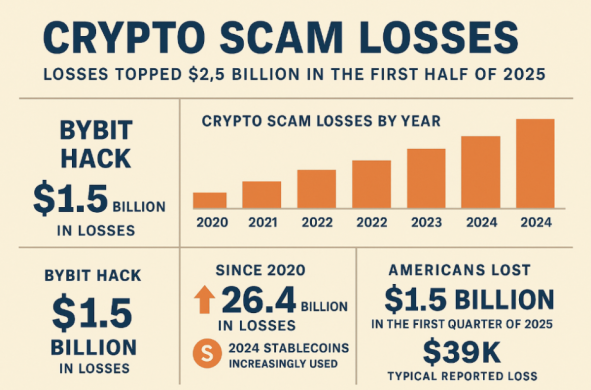
In the decentralized world of blockchains, one misplaced character can turn a routine transfer into a heart‑stopping event. This guide explains what happens if you send crypto to wrong address, why reversals are so difficult, and the exact steps to take (or avoid) next. Before we dive in, remember: prevention is easier (and cheaper) than recovery.

Source: https://www.unchained.com/blog/what-is-a-bitcoin-address
Need to rebalance quickly after a loss? Swap BTC to XMR in seconds — just confirm every character before you click “Confirm”.
Why Does This Keep Happening?
Even experienced traders fall victim to mishaps because the transfer process relies heavily on human copy‑paste accuracy. Long hexadecimal strings look like random noise, wallets often show only a truncated preview, and malware designed to hijack clipboards grows more sophisticated every year. Add network‑specific quirks — such as chains that share similar prefix formats and you have the perfect recipe for a wrong‑destination disaster.
Common triggers include:
- Manual typos in long alphanumeric strings.
- Clipboard malware that silently swaps addresses.
- Network mix‑ups (e.g., sending ERC‑20 USDT to a native BTC address).
- Expired payment links that rotate every few minutes.
Once the transaction is mined, it becomes part of an immutable ledger, which is why understanding what happens if you send Bitcoin to wrong address is critical.
Blockchain Basics: Finality & Irreversibility
Blockchains are built to append‑only ledgers: each new block references the hash of the previous block, creating an unbreakable chronological chain. Editing or deleting a confirmed transaction would require reorganizing the chain from that point forward — a feat that demands overwhelming hash power (on proof‑of‑work networks) or validator consensus (on proof‑of‑stake chains). In practice, that means ordinary users and even exchanges cannot “undo” a broadcast once it has sufficient confirmations.
| Network | Typical Finality | Reversal Chance |
| Bitcoin | 6 blocks (~60 min) | Near‑zero |
| Ethereum | 12+ blocks (<3 min) | Near‑zero |
| Monero | 10 blocks (~20 min) | Near‑zero |
If you realize “I sent Bitcoin to wrong address” after an hour, miners can’t roll back the chain for you.
Can You Recover Crypto Sent to Wrong Address?
Even seasoned traders ask, “How to recover crypto sent to wrong address?” Here’s the big picture before we drill into scenarios:
In most cases, coins are unrecoverable once confirmed. Recovery depends on who controls the private key of the destination address and which chain you used.
1. Same‑Chain, But Wrong Wallet
If the destination is still under your control (old paper wallet, forgotten hardware device), import the private key or seed phrase and move the funds out.
2. Valid Destination, Stranger’s Wallet
Can you recover crypto sent to the wrong place owned by someone else? Only if that person agrees to return it — you’ll need to track them down and hope for honesty.
3. Cross‑Chain Mistakes
Sending BTC to a Litecoin‑formatted string? Some custodial exchanges can sweep the wrong‑chain UTXO and credit you, but they often charge 5–10 % and may refuse altogether.
4. Smart‑Contract Errors
Tokens sent to the contract itself are effectively burned forever.
5. Expired Payment Links
What happens if you send Bitcoin to an expired address? Merchants may recycle addresses into cold storage. Open a support ticket with full transaction details ASAP.
Real‑World Examples
Mistakes span every chain and wallet. A quick real‑world snapshot:
- I sent crypto to the wrong address with one extra character. The address checksum failed; the network rejected the broadcast, so funds never left your wallet.
- Accidentally sent crypto to wrong address on an exchange. Support recovered it for a 0.005 BTC fee after three weeks.
- Sent ERC‑20 tokens to a hardware‑wallet BTC address. Irrecoverable — no shared key space.
For a deeper dive into addressing formats and checksums, read our explainer Bitcoin Addresses: Types and Meaning.
Prevention Is Cheaper Than Recovery
A few proactive habits can spare you the nightmare of saying, “I sent Bitcoin to the wrong address”:

Source: https://www.webopedia.com/crypto/learn/qr-code-crypto-wallet-guide/
- QR codes & address book — eliminate manual entry.
- Clipboard hash pop‑ups — many wallets show the first/last four characters you copied and pasted.
- Test transactions — a $1 pilot can save $10 000 later.
- Multi‑sig approvals — another human must review before broadcast.
- Firmware updates — modern hardware wallets validate chain IDs to stop cross‑chain goofs.
Check the live Bitcoin price today before paying any recovery‑service fee that might exceed what you lost.
Conclusion
Immutable ledgers don’t forgive typos, so operational discipline is your only insurance. Double‑check every character, use test sends, and lean on wallet features designed to spot mistakes. If the worst happens, move fast with complete transaction data — but accept that recovery is the exception, not the rule. Stay vigilant, and your crypto will stay where it belongs: in your own wallet.
